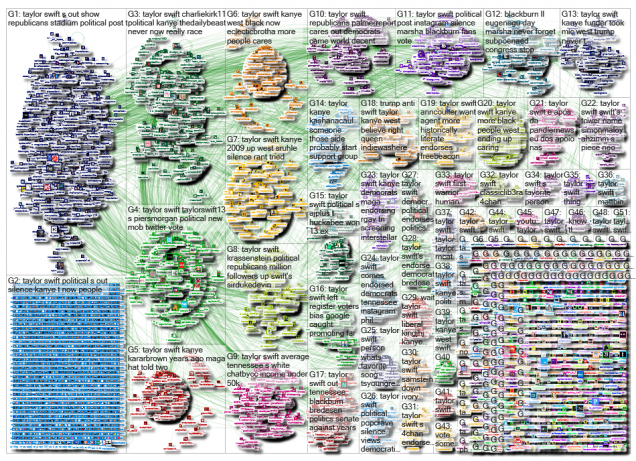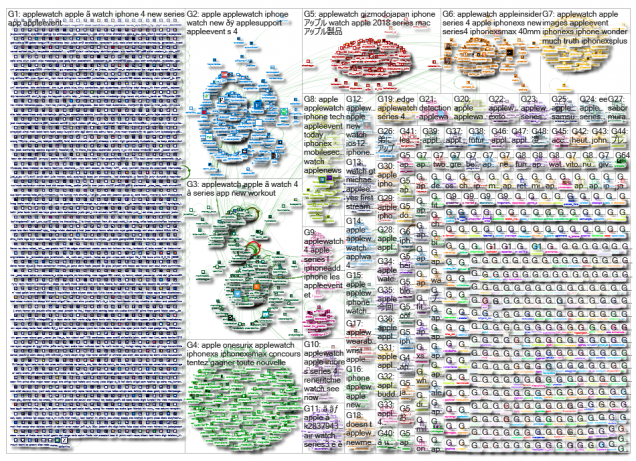Social media platforms like Twitter and Facebook are no longer new things for the general public. Although some may have little experience of using social media platforms through computer or mobile devices, people who have ever contain a bit knowledge about internet usage will surely heard the names of social media from acquaintances or news.
A large amount of researches and experiments have been carried out in order to explore the information exchange pattern and online community construction via social media platforms. Elefant (2011) referred social media technologies as the digital platforms facilitate information sharing, networked individual/ user – created content, as well as collaboration across people both in the online and offline world. The reason why do so many scholars interested in finding out the factors and mediators behind the social media usage and related phenomenon is quite obvious – those media technologies are making revolutionary changes on the way people connect, communicate, and development relationships (Beal & Strauss, 2008; Derks & Bakker, 2013).
Smith and his colleagues (2014) has drew out six typical structures of Twitter conversation networks, which include the polarized crowds, tight crowd, brand clusters, community clusters, broadcast network, and support network. Each structure has its own corresponding real social groups or topics on Twitter platform, while some may have shared features with each other. To help clarified how these structures relate to the revolutionary changes on people’s social networks I have mentioned earlier, two specific examples will be shown before we go further into the discussion.
Taylor Swift, a world-wide famous popular singer, who has just ended her opening performance at the 2018 American Music Awards in California. However, her reputation is never limited only inside the music field, but also being well-known due to her political statements and support on several women acts (Renkl, 2018). The following graphic is the network built by the15,805 Twitter users whose recent tweets contained “Taylor Swift” (Node Graphic Gallery, 2018). If we compare the graphic with Smith’s six Twitter network structures, we will definitely locate it as the community clusters. Although having many isolated individuals who mentioned “taylor swift” with no interaction with any other user at the left corner, as shown in the picture, there are several small subgroups formed under the larger “taylor swift” topic. The crowd is clustered on a relatively equal basis rather than having outstanding influencers or “hosts” of each topic group. Meanwhile, these groups are not “islets”. The green lines – which named as edges – across each sub-topic group, are represented as the existing interactions (comments and replies) among different participants among topics. Such a heavier interconnection among the subgroups could be one of the most striking features of the community clusters. Furthermore, top words actually partly shared among subgroups according to the graphic description ((Node Graphic Gallery, 2018)), such as “taylor”, “republicans”, “people”, “political”, etc. A similar situation also happened under the top hashtag part. Consider about Swift’s recent social activities and statements, what people share and communicate on the Twitter seems to be a great reflection about the her current social image. In addition, the influencers under “taylor swift” also strongly support this conclusion, since most of them are engaged in political work or activities.
 (Retrieved from: https://nodexlgraphgallery.org/Pages/Graph.aspx?graphID=170786#headerTopVertices)
(Retrieved from: https://nodexlgraphgallery.org/Pages/Graph.aspx?graphID=170786#headerTopVertices)
Another structure in Smith and his colleagues’ research is brand clusters. The diagram of brand and community clusters are like twin brothers, however, differences do exists between them. Take the “applewatch” as an example. One of the most interesting part is the large number of isolated nodes on the left side of the graphic. As described by Smith and his colleagues (2014), brands would have much more disconnected contributors who mention the topic but do not link to one another than the community clusters. People who talk about a same brand usually have different concerns or purposes, which may lead their tweet more like individual topic rather than a discussion one. Although the graphics of both brand and community clusters contain small groups, unlike groups in community graphic, there are fewer green edges intersecting between group members under the “applewatch” topic. This fact perfectly matched with Smith’s brand structure. In addition, if we combine the top hashtags with the fact of lacking of interaction among groups, we may find out that participants’s attention is scattered in various aspects about applewatch, such as the apple series product, iPhonexs, wallpaper, mobile security, and tech issues. Therefore, although groups do share some similar top words, users’ concerns differ greatly, making it difficult to establish communication between participants.
 (Retrieved from: https://nodexlgraphgallery.org/Pages/Graph.aspx?graphID=170769#headerTopHashtags)
(Retrieved from: https://nodexlgraphgallery.org/Pages/Graph.aspx?graphID=170769#headerTopHashtags)
In fact, all the six structures in Smith and his coworker’s Twitter map showed a common fact that most of the participants were interacting with each other in certain ways – through information exchange or topic contribution either in-group or among groups. Once the foundation of online social network has been built, it turns to be the virtual social capital that people could use for further needs, just like how it works in real life.
The PEJ report once stated that “the short-form messaging site is primarily about passing along important—often breaking—information in a way that unifies or assumes shared values within the Twitter community (Rainie & Wellman, 2012, p.211),” which implied that social media users could cluster in a short time period based only on a little common interests or values of a specific topic. The consequence of such behavior is exactly the various network types in Smith’s Twitter conversation networks.
Another unique feature about online user community is that it runs in a more creative and free way since every member of each group has the equal right of speak out for themselves or their groups, even though the opportunity of being heard seems relatively unequal and could be super random at the same time. However, stratification of user seems still exist at the social media sphere. The control over information is related to other scarce social resources such as class, status, and power. Meanwhile, such resources are the basis for stratification in society (Marx, 2007, p. 91). Rainie and Wellman regarded the networked creation as a somehow powerful content with potential reach of wider audience (p. 215). People who generate or control the most scarce or most needed information are having more attractiveness and power than other participants. The created content, such as tweet and post, in turn, allows them to build creators’ own networks (Rainie & Wellman, p.215), and gather lots of followers or reactions from others. In doing so, these creators, or influencers, would receive validation, reputation enhancement, feedback, and crowdsourced social support (p. 215). Therefore, even if the social network seems to be a free, spontaneous, and autonomous, its final structure is the result of infomediation. There are always invisible hands behind the online interaction and network formation, whether it is intentional or unintentional.
Moreover, in addition to the power of infomediation based on information itself, the process of carrying and transmitting the information another factor need to be concerned. Smyrnaios and Nikos (2018) claimed that vertical integration existing both inside the software and online services (p. 90), while the oligopoly was also present in part of the infomediation infrastructure: operating systems, consumer electronics, telecommunications networks and data centers (p.91). Devices are the tool or channel we used for online community and network construction. Although it might be hard for us to observe the influence of vertical integration on social networks straightforwardly, the different Internet access speed, various application operating system provided by different suppliers, and the range of online services an account could be accessed, are all exert a subtle influence on our daily usage on social platforms. For instance, users who use the IOS system will be more likely to participate in the online conversation relate to iTunes or iPhone.
In sums, infomediation and vertical integration are acting like the invisible hands behind the online media platforms. Outwardly, people operate the media technologies of their own free will, interact with other users to form their own network relations and structures, produce or expand online content on their own. However, the essential requirements of the existing of internet and the features of information resource exchange forces us to accept The impact of vertical integration and infomediation. Though the online network structure is becoming unprecedented huge and integration due to the vagueness of many boundaries, such as the producer and consumer, or professional and amateur, the virtual world never get rid of the influence of the real society.
Reference:
Beal, A., & Strauss, J. (2008). Radically transparent: Monitoring and managing reputations online. Indianapolis, IN: Wiley.
Derks, D., & Bakker, A. (Eds.). (2013). The psychology of digital media at work. Hove: Psychology Press.
Marx, G. (2007). Privacy and Social Stratification. Knowledge, Technology & Policy, 20(2), 91-95.
McFarland, L., Ployhart, R., & Chen, Gilad. (2015). Social Media: A Contextual Framework to Guide Research and Practice. Journal of Applied Psychology, 100(6), 1653-1677.
Rainie, H., & Wellman, Barry. (2012). Networked : The new social operating system. Cambridge, Mass.: MIT Press.
Renkl, M. (2018, Oct 13). Taylor Swift, the Grown-Up in the Room. The New York Times. Retrieved from: https://www.nytimes.com/2018/10/13/opinion/sunday/taylor-swift-phil-bredesen-marsha-blackburn.html
Smyrnaios, N. (2018). Internet oligopoly : The corporate takeover of our digital world (Digital activism and society). United Kingdom: Emerald Publishing.